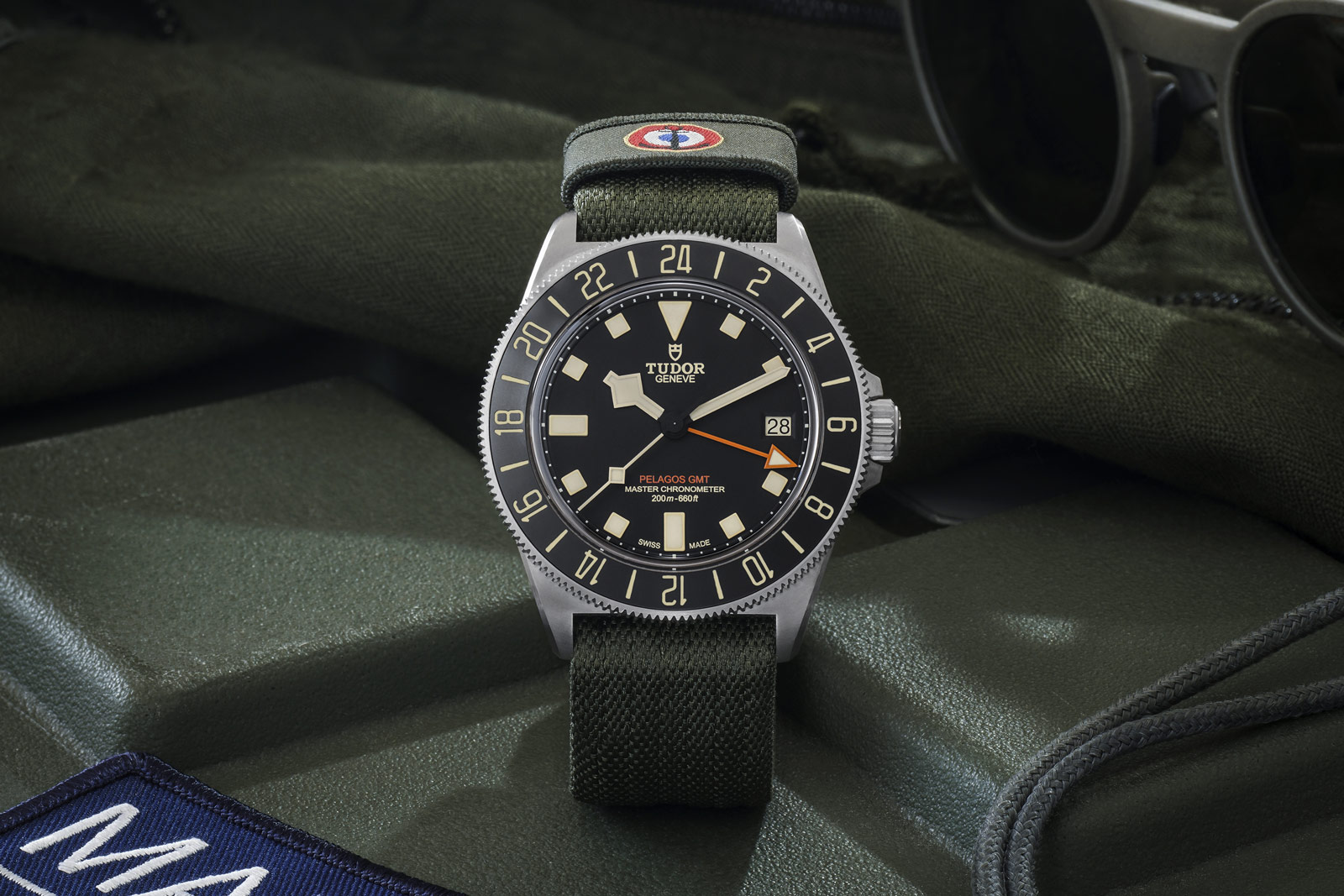Tudor Introduces Pelagos FXD GMT Zulu Time
Created for French naval aviators.
Created in collaboration with the aviators of Aéronautique Navale, the air branch of the French navy, the Pelagos FXD GMT Zulu Time is Tudor’s latest wristwatch developed for a militaruunit.
A sibling of Pelagos FXD “Marine Nationale” issued to French navy divers, the Pelagos GMT Zulu Time is housed in a titanium Pelagos case with fixed lug bars (hence “FXD”). Featuring a ceramic bezel with a luminescent 24-hour scale, the Pelagos GMT adds the long-awaited second time zone function to the Pelagos line of professional-spec dive watches. It sports a bright orange GMT hand along with faux-vintage, vanilla-tone block markers and “snowflake” hands.
Initial thoughts
Tudor was a historical supplier of watches to the French navy starting in the 1950s, a relationship that was revived in 2021 with the Pelagos FXD. The Pelagos GMT continues the partnership, but pivots to address the needs of naval pilots instead of divers. This also makes it more useful for civilians, since a dual time zone function is more practical for most than a deep-sea diver’s watch.
At 42 mm in diameter, however, the Pelagos GMT is one of Tudor’s larger watches, which means it probably isn’t as handy for traveling as the compact Black Bay 58 GMT that’s just 39 mm. Still, the titanium case helps with lightness, and the large size suits the military design.
In typical Tudor fashion, the Pelagos GMT is an excellent value proposition. For US$4,625, you get a titanium case with ceramic bezel, plus a METAS and COSC-certified in-house calibre. Moreover, it sports a true GMT function that’s integrated into the movement, unlike most GMT watches in this price range that rely on an add-on hour hand.
A pilot’s tool
The Pelagos GMT is essentially a Pelagos FXD that gains a GMT function, so it retains the same case with fixed bars that measures 42 mm in diameter and 12.7 mm in thickness. Like the other FXD models, the GMT has a titanium case that’s entirely brushed and water resistant to 200 m. The bidirectional rotating bezel is also titanium, while the 24-hour insert is black ceramic with luminous markings.
Notably, the case is paired with a strap specific to the Pelagos GMT. It’s a one-piece strap in the same military-green colour as the flight suit of French navy pilots. It’s fitted to a titanium pin buckle and sports a removable fabric keeper bearing the emblem of French Naval Aviation.
The black dial similarly retains the familiar Pelagos design with “snowflake” hands and an orange GMT pointer. Notably, the Super-LumiNova on the dial, hands, and bezel has a faux-vintage appearance in daytime, but is colour coded in the dark. The hour, minute, and seconds hand glow blue, while the GMT hand and bezel markings glow green.
The Pelagos GMT is powered by the MT5652-U that’s both METAS and COSC-certified. It has 65 hours of power reserve and beats at 28,800 beats per hour (4 Hz). Equipped with a silicon balance spring, the movement is magnetism resistant up to 15,000 gauss.
The movement is concealed beneath a solid case back engraved with the anchor symbol of Aéronautique Navale, along with the year of production, just like the Pelagos FXD. Watches produced in 2024, for example, will be engraved “M.N.24”, with letters short for Marine Nationale.
Key facts and price
Tudor Pelagos FXD GMT “Zulu Time”
Ref. 2542G247NU
Diameter: 42 mm
Height: 12.7 mm
Material: Titanium
Crystal: Sapphire
Water resistance: 200 m
Movement: Cal. MT5652-U
Functions: Hours, minutes, seconds, date and GMT
Winding: Automatic
Power reserve: 65 hours
Strap: Fabric strap with titanium pin buckle and green removable fabric keeper
Limited edition: No
Availability: Now at Tudor boutiques and retailers
Price: US$4,625
For more, visit tudorwatch.com.
Back to top.